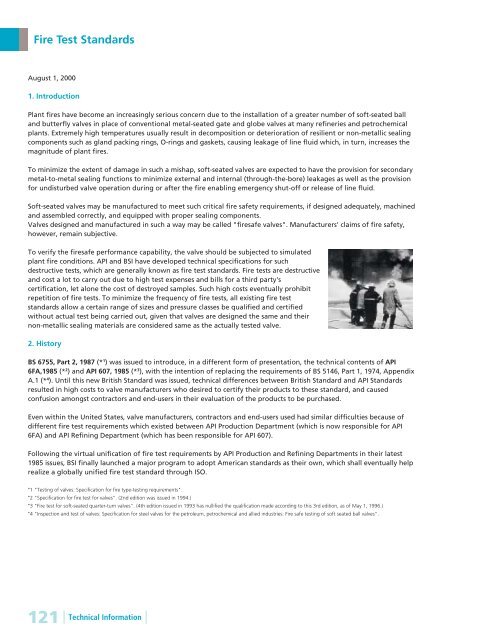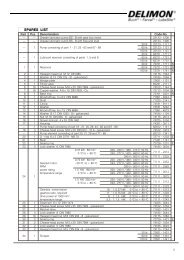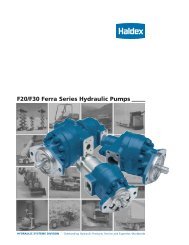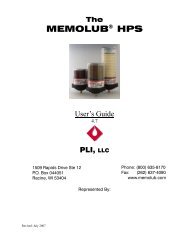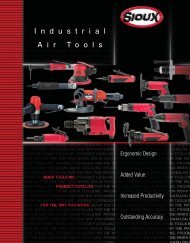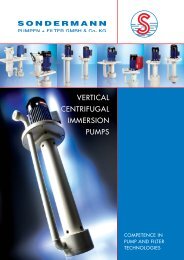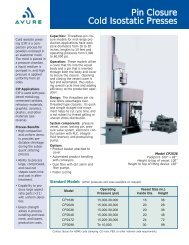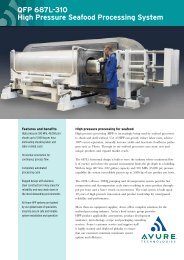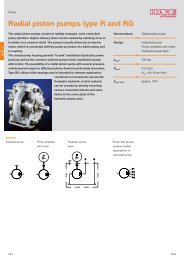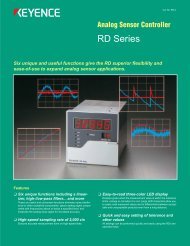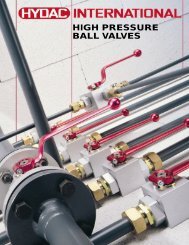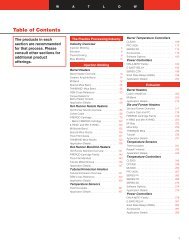Steel Ball Valves - Hasmak.com.tr
Steel Ball Valves - Hasmak.com.tr
Steel Ball Valves - Hasmak.com.tr
Create successful ePaper yourself
Turn your PDF publications into a flip-book with our unique Google optimized e-Paper software.
Fire Test Standards<br />
August 1, 2000<br />
1. In<strong>tr</strong>oduction<br />
Plant fires have be<s<strong>tr</strong>ong>com</s<strong>tr</strong>ong>e an increasingly serious concern due to the installation of a greater number of soft-seated ball<br />
and butterfly valves in place of conventional metal-seated gate and globe valves at many refineries and pe<strong>tr</strong>ochemical<br />
plants. Ex<strong>tr</strong>emely high temperatures usually result in de<s<strong>tr</strong>ong>com</s<strong>tr</strong>ong>position or deterioration of resilient or non-metallic sealing<br />
<s<strong>tr</strong>ong>com</s<strong>tr</strong>ong>ponents such as gland packing rings, O-rings and gaskets, causing leakage of line fluid which, in turn, increases the<br />
magnitude of plant fires.<br />
To minimize the extent of damage in such a mishap, soft-seated valves are expected to have the provision for secondary<br />
metal-to-metal sealing functions to minimize external and internal (through-the-bore) leakages as well as the provision<br />
for undisturbed valve operation during or after the fire enabling emergency shut-off or release of line fluid.<br />
Soft-seated valves may be manufactured to meet such critical fire safety requirements, if designed adequately, machined<br />
and assembled correctly, and equipped with proper sealing <s<strong>tr</strong>ong>com</s<strong>tr</strong>ong>ponents.<br />
<s<strong>tr</strong>ong>Valves</s<strong>tr</strong>ong> designed and manufactured in such a way may be called "firesafe valves". Manufacturers' claims of fire safety,<br />
however, remain subjective.<br />
To verify the firesafe performance capability, the valve should be subjected to simulated<br />
plant fire conditions. API and BSI have developed technical specifications for such<br />
des<strong>tr</strong>uctive tests, which are generally known as fire test standards. Fire tests are des<strong>tr</strong>uctive<br />
and cost a lot to carry out due to high test expenses and bills for a third party's<br />
certification, let alone the cost of des<strong>tr</strong>oyed samples. Such high costs eventually prohibit<br />
repetition of fire tests. To minimize the frequency of fire tests, all existing fire test<br />
standards allow a certain range of sizes and pressure classes be qualified and certified<br />
without actual test being carried out, given that valves are designed the same and their<br />
non-metallic sealing materials are considered same as the actually tested valve.<br />
2. History<br />
BS 6755, Part 2, 1987 (* 1 ) was issued to in<strong>tr</strong>oduce, in a different form of presentation, the technical contents of API<br />
6FA,1985 (* 2 ) and API 607, 1985 (* 3 ), with the intention of replacing the requirements of BS 5146, Part 1, 1974, Appendix<br />
A.1 (* 4 ). Until this new British Standard was issued, technical differences between British Standard and API Standards<br />
resulted in high costs to valve manufacturers who desired to certify their products to these standard, and caused<br />
confusion amongst con<strong>tr</strong>actors and end-users in their evaluation of the products to be purchased.<br />
Even within the United States, valve manufacturers, con<strong>tr</strong>actors and end-users used had similar difficulties because of<br />
different fire test requirements which existed between API Production Department (which is now responsible for API<br />
6FA) and API Refining Department (which has been responsible for API 607).<br />
Following the virtual unification of fire test requirements by API Production and Refining Departments in their latest<br />
1985 issues, BSI finally launched a major program to adopt American standards as their own, which shall eventually help<br />
realize a globally unified fire test standard through ISO.<br />
1 "Testing of valves: Specification for fire type-testing requirements".<br />
2 "Specification for fire test for valves". (2nd edition was issued in 1994.)<br />
3 "Fire test for soft-seated quarter-turn valves". (4th edition issued in 1993 has nullified the qualification made according to this 3rd edition, as of May 1, 1996.)<br />
4 "Inspection and test of valves: Specification for steel valves for the pe<strong>tr</strong>oleum, pe<strong>tr</strong>ochemical and allied indus<strong>tr</strong>ies: Fire safe testing of soft seated ball valves".<br />
121 021<br />
Technical Information


